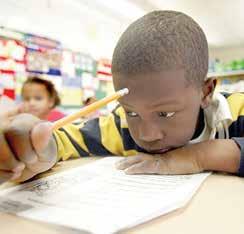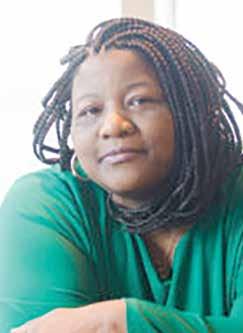
7 minute read
OpEd
NEWSPAPER READING IS A HABIT
DON’T BREAK THE HABIT!


READ THE WASHINGTON INFORMER YOUR WAY:
n In Print – feel the ink between your fingers of our Award Winning Print Edition n On the Web – www.washingtoninformer.com updated throughout the day, every day n On your tablet n On your smartphone n Facebook n Twitter n Weekly Email Blast – sign up at www.washingtoninformer.com

202-561-4100 For advertising contact Ron Burke at rburke@washingtoninformer.com
...Informing you everyday in every way
THE WASHINGTON INFORMER NEWSPAPER (ISSN#0741-9414) is published weekly on each Thursday. Periodicals postage paid at Washington, D.C. and additional mailing offices. News and advertising deadline is Monday prior to publication. Announcements must be received two weeks prior to event. Copyright 2016 by The Washington Informer. All rights reserved. POSTMASTER: Send change of addresses to The Washington Informer, 3117 Martin Luther King, Jr. Ave., S.E. Washington, D.C. 20032. No part of this publication may be reproduced without written permission from the publisher. The Informer Newspaper cannot guarantee the return of photographs. Subscription rates are $45 per year, two years $60. Papers will be received not more than a week after publication. Make checks payable to:

THE WASHINGTON INFORMER 3117 Martin Luther King, Jr. Ave., S.E Washington, D.C. 20032 Phone: 202 561-4100 Fax: 202 574-3785 news@washingtoninformer.com www.washingtoninformer.com
In Memoriam Dr. Calvin W. Rolark, Sr. Wilhelmina J. Rolark
PUBLISHER
Denise Rolark Barnes
STAFF
D. Kevin McNeir, Editor Ron Burke, Advertising/ Marketing Director Shevry Lassiter, Photo Editor Lafayette Barnes, IV, Assistant Photo Editor John E. De Freitas, Sports Photo Editor Dorothy Rowley, Online Editor ZebraDesigns.net, Design & Layout Mable Neville, Bookkeeper Dr. Charles Vincent, Social Sightings columnist Tatiana Moten, Social Media Specialist Angie Johnson, Circulation
REPORTERS
Stacy Brown (Senior Writer), Sam P.K. Collins, Timothy Cox, Will Ford (Prince George’s County Writer), Jacqueline Fuller, Hamil Harris, D. Kevin McNeir, Kui Mwai, Lee Ross, Dorothy Rowley, Brenda Siler, Lindiwe Vilakazi, Sarafina Wright, James Wright,
PHOTOGRAPHERS
John E. DeFreitas, Ja’Mon Jackson, Shevry Lassiter, Roy Lewis, Jr., Robert R. Roberts, Anthony Tilghman WORDS FROM THE EDITOR
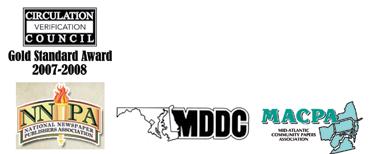
5 Dr. Shantella Sherman (Photo by India Kea)
Surmounting Educational Obstacles
The passport to increased social mobility in Black communities has rested almost entirely on accessing and availing educational opportunities. Following the Emancipation Proclamation, the American Missionary Association, along with private Black philanthropists and churches, established thousands of Normal schools, colleges, and universities. Irrespective of age, entire families attended classes to first, learn rudimentary grammar and mathematics skills, and subsequent liberal arts, trade, and science-based instruction. Surmounting educational obstacles meant working collectively to ensure everyone who
wanted to learn, could. Still, with America’s apartheid regime, known as Jim Crow, firmly entrenched, rural, and sharecropping families were prohibited from sending their children to schools. At the same time, middle-class and elite Black families opted for segregated public or parochial schools. As a result, only a minority of Black students received the quality educations they sought. Supreme Court Justice Thurgood Marshall predicted an end to all school segregation within five years of the Brown v. Board of Education ruling. And while government-sanctioned laws and ordinances continued to undermine the move to integrate schools, thousands of school systems did attempt to provide equal access. Why? Because being able to rise to the challenges – and overcome them – in order to learn came without an option for failure. So, as the nation moves to return this year to in-person learning after more than a year of virtual learning, it is important to remember that now, as then – failure is not an option. There is uncertainty, there are unknown variables, there are new practices and procedures, and there is even a bit of anxiety moving about between parents, administrators, students, and teachers. Still, we must push forward. That said, it is important that we return to a effort of community-supported academic success. Students: Do your part – work hard and take care of yourselves. This may mean going to bed early, increasing your water intake (dehydration plays havoc with concentration), and make a habit of going over your notes daily so that when test times come, the information has become as familiar as your favorite song. Also, when you need help, speak up. There is no shame in not knowing or even falling behind; we’ve all faced these issues. Parents: Know your child’s strengths, weaknesses, work ethics, and needs. You are their greatest ally, advocate, and cheerleader, but you must be all of these from a position of honesty. When or if you believe your child is struggling, utilize the resources designed by your school system to get help. Work with your child’s teachers, counselors, and your councilmembers to find best-practices and healthy solutions. Teachers: Take a bow! You are doing an amazing job against incredible odds, and I commend your every effort. Though many are going above and beyond their duties, few are squarely applauded. Please, keep up the good work and know that it is appreciated. Find time for mental and emotional health breaks during the week to avoid burnout. Churches: Consider Urban Alternative pastor Tony Evans’ Adopt-a-School Initiative or other platforms that allow you to partner with area schools to assist with guidance, conflict resolution, after school activities, rites of passage, and community service projects. Finally, as the school year #ReopensStrong do your best to be supportive and kind to one another. We are all trying to figure out the next moves, the safest solutions, and the most effective methods to ensure success. Young people are watching the adults and learning by example how best to handle disagreements about policies, and how to manage frustration and anxiety. Afterall, we sit on a precipice now that will determine how the nation’s youth will value education. Let us teach them our most valuable asset is them.
Read, Learn, Grow. Dr. Shantella Y. Sherman
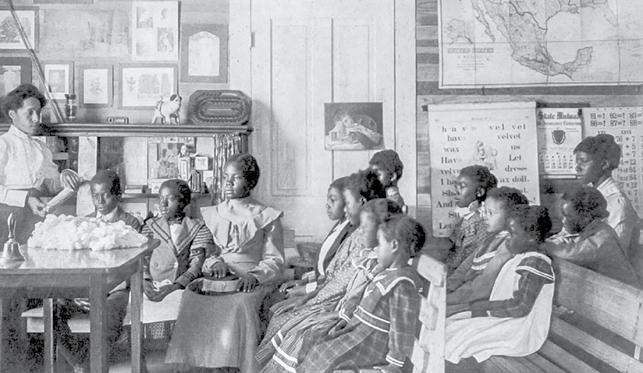
Education Disparities … By the Numbers By Lee Ross WI Staff Writer
United Negro College Fund (UNCF) data shows that African American students are less likely than white students to have access to college-ready courses.
In fact, in 2011-12, only 57 percent of black students have access to a full range of math and science courses necessary for college readiness, compared with 81 percent of Asian American students and 71 percent of white students. African American students are less likely to be “college ready”. In fact, 61 percent of ACT-tested black students in the 2015 high school graduating class met none of the four ACT college readiness benchmarks, nearly twice the 31 percent rate for all students. Even when black students do have access to honors or advanced placement courses, they are vastly underrepresented in these courses. Black and Latino students represent 38 percent of students in schools that offer AP courses, but only 29 percent of students enrolled in at least one AP course. Black and Latino students also have less access to gifted and talented education programs than white students.
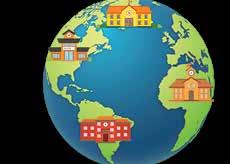
According to Brookings: The U.S. educational system is one of the most unequal in the industrialized world, and students routinely receive dramatically different learning opportunities based on their social status. In contrast to European and Asian nations that fund schools centrally and equally, the wealthiest 10 percent of U.S. school districts spend nearly 10 times more than the poorest 10 percent, and spending ratios of 3 to 1 are common within states. Black children represent 19 percent of the nation’s pre-school population, yet 47 percent of those receiving more than one out-of-school suspension. In comparison, white students represent 41 percent of pre-school enrollment but only 28 percent of those receiving more than one out-of-school suspension. Even more troubling, black students are 2.3 times as likely to receive a referral to law enforcement or be subject to a school-related arrest as white students. Black students spend less time in the classroom due to discipline, which further hinders their access to a quality education. Black students are nearly two times as likely to be suspended without educational services as white students. Black students are also 3.8 times as likely to receive one or more out-of-school suspensions as white students.

Will you be the next D.C. Spelling Bee Winner?
40th Annual Spelling Bee
Open to 3rd - 8th grade students enrolled in D.C. public, charter, private, parochial or home schools.
Registration opens August 20, 2021
Contact your school coordinator or call The Washington Informer at (202) 561-4100
Sponsorship opportunities are available, email rburke@washingtoninformer.com
